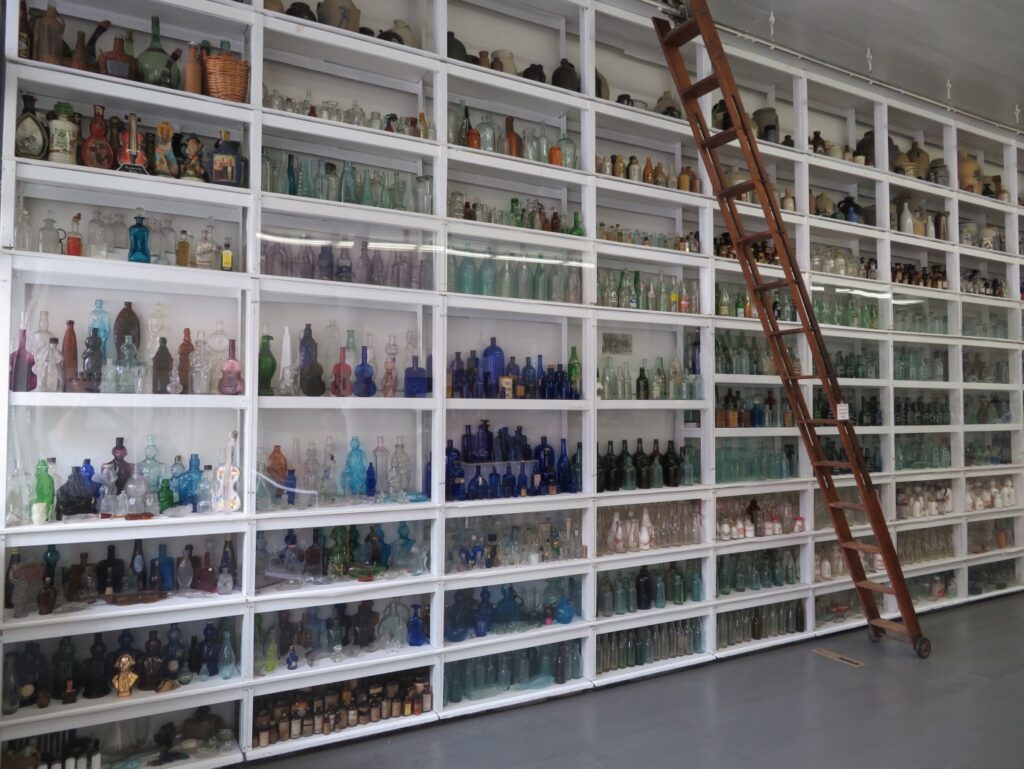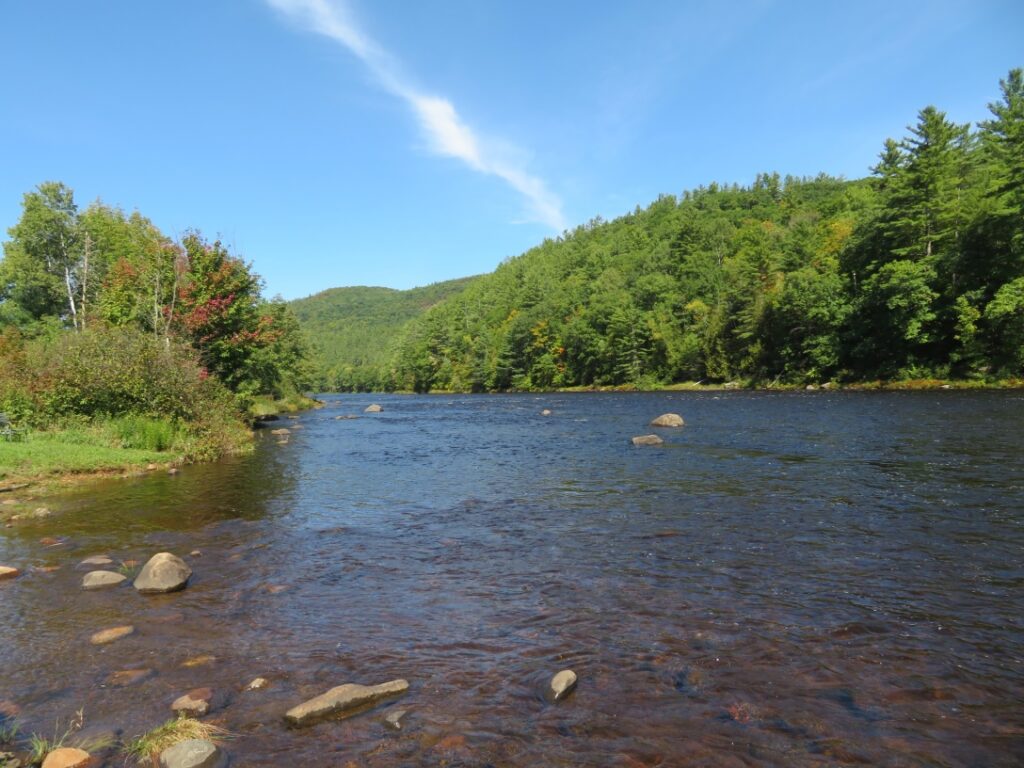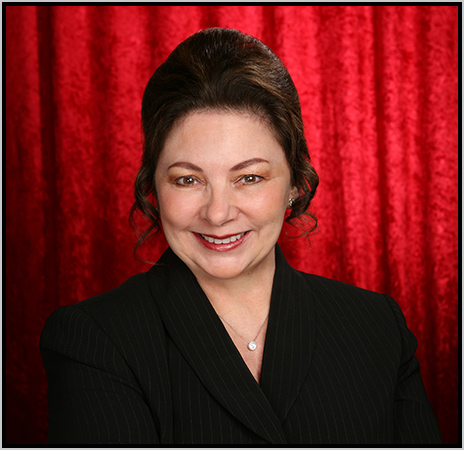The next day we packed up our things and headed twelve miles south out of town to Ballston Spa, New York. Our first stop was The National Bottle Museum. We were met by Meg Stevens, the interim director, who gave us an introduction and small tour of the two-story displays. She explained that the museum was established to educate the public about the cultural, economic and social contributions of glassware. One entire far left wall rose to the high ceiling with white metal shelves filled with historic, mostly 1800 glassware for the kitchen, apothecary, alcohol, perfumes, drinks, paper weights, and art. The colors were of the rainbow and the variety was impressive. More information and photographs can be found here.
Meg began collecting at thirteen, favoring the yellow radium glowing glass, and the violin shape. There are over 4,000 glass items in the collection.

The National Bottle Museum
Afterward, we entered the Adirondack Mountain State Park with over six million acres of forest. It was majestic and powerful with views of conifers fir, hemlock, Northern and Eastern redcedar, and golden Tamarack; the black, white, red and Norway Spruce; and the White, Jack, Pitch, Red, and Scotch Pines; which soared to the skies with upturned dark forest green branches. They were the perfect background for the fuller and broader hardwood trees that had changing colorful leaves. These were the Basswood, Beech, the Elm, the American, White, and Black Ashes; the Poplar, Quaking Aspen, Black and Pin Cherry, and the Serviceberry; the Gray, White, Yellow and Paper Birches; the Hophornbeam; the Mountain, Red, Striped, and Sugar Maples; and Red Oak. Each of these in their own time would turn from bright green to olive, then yellow, gold, orange and burst into red, finding their true glory later in October.
Half an hour later, we pulled over to look more closely at the Hudson River, which was flowing right next to the road. There was a picnic bench there, so we had our lunch and enjoyed the warm day without rain.

Picnic spot along the Hudson River.
Near the state park’s midpoint we came to the Adirondack Experience. After just having gone through the forest, what could be more experiential? But we were game to see what they meant. We entered to discover that the experience was on 120 acres overlooking Blue Mountain Lake, via walkways to twenty different buildings, explaining the beginnings and continued offerings of the Adirondacks. Not wanting to see every building, nor did we have the time, we focused on the main history exposition. One could sit in a canoe surrounded by photographed murals for pictures, and a portion was dedicated to the original tribal people of the area. There were old cars, buggies, a stage coach, and a fully decorated train car with all the luxuries of velvet seats with sleeping car to show how people once arrived.

The Adirondack Experience – log cabin
There were examples of log cabins that the wealthy built with the iconic style of decorative stick and tree branch inlay around doors and windows, with hand-made furnishings. There were several videos of people speaking to the viewer, as if they were from an earlier time. The first one was a miner welcoming the viewer as a new underground iron worker about to start the day. He spoke about the dangers and low pay and if we failed or died from the hard work that we could be easily replaced. The exhibits continued showing the early years, some with machines that were used for maple sugaring and ice harvesting, then boating and forestry. More, here.
We left and then arrived at our next destination, the house estate of Oneida.

House estate of Oneida.
While the woman in the bookshop took our information and went to run our credit card and find out our room number, she suggested that we walk across the hall to the exhibit that gave an overview of Oneida’s history. We were surprised that they explained the unusual sexual habits of the inhabitants, which we had read about. When she returned, she walked us down several corridors to a red door and placed our name into a slot on the door, as if we were new residents. She showed us a beautiful large room with a high ceiling, the walls painted white with sky-blue wood framing, and a large fully tiled bathroom. Both rooms had very tall windows that faced a large grassy lawn and trees. We took a break and relaxed in our pretty room. Since we had arrived late in the day, we decided to go to dinner and then do the walking tour in the morning. We went to the Creekside Inn Restaurant, which can be read about on its separate review, here.
Our night was broken by the sound of thunder, lightning and rain, but the next day the sky had already partially cleared. We had a light continental breakfast the next morning and then went on a walking tour of their main building, guided by a map given to us at the bookstore. There were many rooms that served as an example of what the old Oneida house once looked like with sample bedrooms, kids rooms, and sitting rooms, but the highlights were the library with large dark wooden shelves and the two-story theater. More on this historical site can be found, here.
 The official website of Lita-Luise Chappell, writer on sex, magic, food, distant lands, and everyday life with articles, poetry, novels, travelogues, rituals, cookbooks, and short-stories.
The official website of Lita-Luise Chappell, writer on sex, magic, food, distant lands, and everyday life with articles, poetry, novels, travelogues, rituals, cookbooks, and short-stories.
